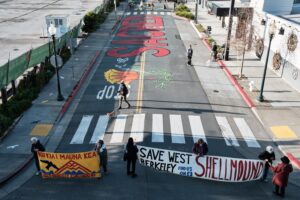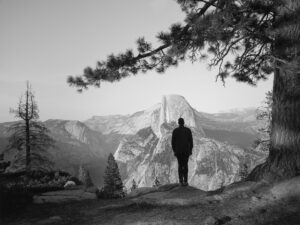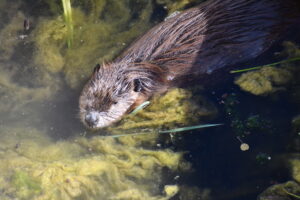In late spring of 1942, I was a student at UC Berkeley. After class one day, a professor of mine asked if I might be interested in learning about youth hostels. I had heard of young people trekking through Europe and staying in hostels and had dreamed of taking such a trip myself. But since the United States was gearing up for war, I knew this dream would have to wait. What my professor suggested was that I visit a youth hostel across the Bay near Palo Alto. It intrigued me, so I agreed.
The next weekend I took the local streetcar, the new Bay Bridge train, and yet another train down the Peninsula to my aunt’s house in San Mateo. I borrowed her car and found my way to the road leading west from Los Altos to the home of Frank and Josephine Duveneck, Hidden Villa. It was a peaceful rural setting–chickens scratching in the dirt, a few horses in a corral, and a small structure under the trees on the left. That was the youth hostel.
Several young people were gathered, talking to a gentleman whom I soon learned was Frank Duveneck. Friendly and welcoming, Frank took us inside the simple wood-frame building, where there was a small area for preparing food and a table and benches where you could share a meal.
Frank told us this was the only hostel in the western United States and his hope was to start hostels along the Pacific coast and others across the country. Some years later, Josephine and I went to several meetings of the American Youth Hostel group in San Francisco, which is now Hostelling International. Today, the group has hostels in San Francisco, the Marin Headlands, and Point Reyes, and two on the San Mateo coast.
At the end of the day, Frank took us on a path leading to the Duvenecks’ home. We passed milk cows, chickens, horses, pigs, a vegetable garden, and even a foundry. There were beautiful flower gardens, too. In later years Frank often had a large vase of flowers at the entrance to their residence, known as the “Big House” to distinguish it from the original white cottage nearby. What an idyllic place! Here the Duvenecks raised four children, and–always devoted to social justice–they took in many others who needed shelter. Notable among the latter were Japanese-Americans who had been interned during World War II and had lost their homes and fortunes.
Several years after my introduction to the Duvenecks and Hidden Villa, my husband and I were preparing to build a new home. We met with the contractor, Dan Dana, and his wife, Elizabeth, an architect. Liz turned out to be the daughter of Frank and Josephine Duveneck. They built our house and their own next door, and we became good friends.
Liz often took her children and one or more of us Rusmores to Hidden Villa where they could explore the creeks, pastures, and hills of the ranch. A favorite hiking destination was the “Windmill Pasture,” where there was indeed a windmill in the meadow, although it was not in good repair.
The Duvenecks eventually gave this 430-acre piece of their large property to the Midpeninsula Regional Open Space District. Today, that beautiful area is known as the Duveneck Windmill Pasture in Rancho San Antonio Open Space Preserve, open for hiking, kite-flying, and picnicking all year. The windmill is gone, but a trail leads from the meadow to a hilltop from which one can see many of the Bay Area mountains to the north, south, and east. Visible too are the cities and freeways that have filled the formerly pastoral South Bay.
Hidden Villa is now thriving as an independent nonprofit on the rest of the Duvenecks’ property. An annual dinner draws large crowds of devoted friends in support of the ranch’s projects. The vegetable garden yields produce sold through a local farmers’ market and a weekly subscription program.
As for me, I now live in Palo Alto and try to visit the ranch often. In winter, the streams are full and rushing; in spring the gardens are bursting with flowers and many species of native plants bloom beside the trails. You, too, can visit the ranch, which is open to the public every day but Monday.
For more on Hidden Villa, see our story Back to the Land at Hidden Villa.

.jpg)



